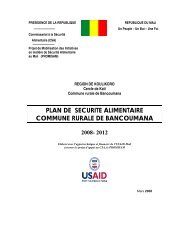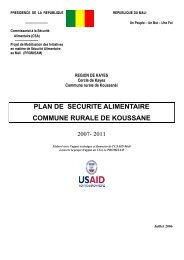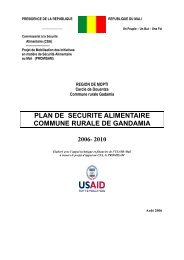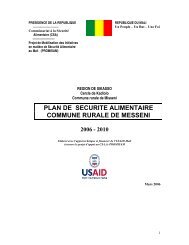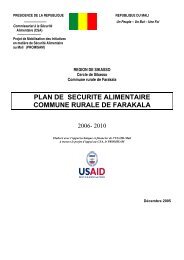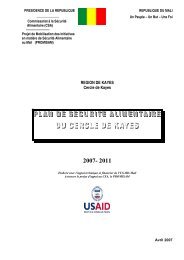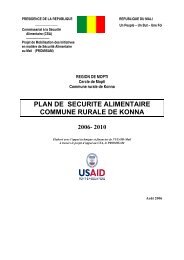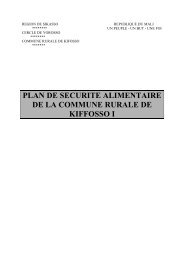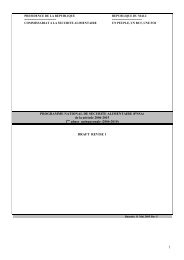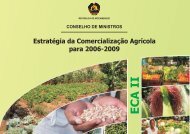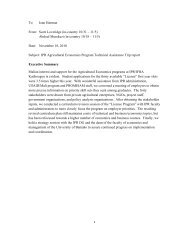STATA 11 for Windows SAMPLE SESSION - Food Security Group ...
STATA 11 for Windows SAMPLE SESSION - Food Security Group ...
STATA 11 for Windows SAMPLE SESSION - Food Security Group ...
You also want an ePaper? Increase the reach of your titles
YUMPU automatically turns print PDFs into web optimized ePapers that Google loves.
Stata <strong>11</strong> Sample Session Section 2 – Restructuring Data Files – Table Lookup & Aggregation<br />
Step 3: Merge the two files<br />
created in steps 1 & 2 to<br />
compute calories produced<br />
per adult equivalent.<br />
The merge command<br />
5. Run the describe command again.<br />
To verify that this variable was created, summarize the<br />
variable ae.<br />
1. Statistics then Summaries, tables and tests<br />
then Summary and Descriptive Statistics then<br />
Summary Statistics<br />
2. Variable is ae<br />
3. Don’t <strong>for</strong>get to copy the command into the do-file<br />
editor, then click on the Ok button.<br />
You should find that the average adult equivalent over all<br />
households is 3.49.<br />
The Stata commands are:<br />
label variable ae "Adult equivalents per household"<br />
summarize ae<br />
This completes step 2. Save this file as HH-FILE2.DTA.<br />
1. Click on File/Save As...<br />
2. Filename is hh-file2<br />
3. Click on the Save button.<br />
4. Copy the command from the Results window and<br />
paste it into the do-file editor, delete the reference<br />
to the directory, and add a comment to explain<br />
what you have done.<br />
The Stata command is:<br />
save "hh-file2.dta"<br />
If you run the syntax again and try to save the<br />
“hh-file2.dta”, you will get an error message. To save to<br />
a file that already exists on the hard disk, an additional<br />
subcommand must be added, “, replace”<br />
save "hh-file2.dta", replace<br />
We have created two files: hh-file1.dta, which contains<br />
the calorie-production data <strong>for</strong> all households, and hhfile2.dta,<br />
which contains the adult-equivalent data <strong>for</strong> all<br />
households. We need to combine these files case-by-case<br />
matching by district, village and household, to get both<br />
sets of data into one file. To do this, we use Combine<br />
datasets / Merge two datasets under the Data menu<br />
choice.<br />
72



